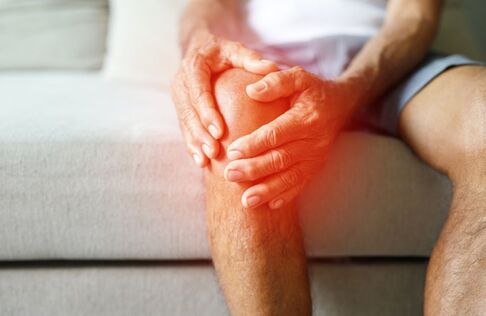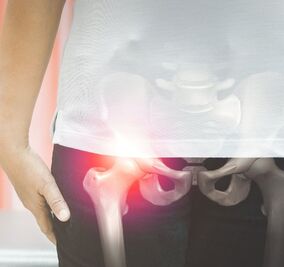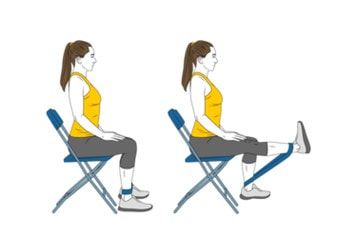It is one of the most common joint problems with 595 million people being affected by it as of 2020.[1] Within Australia, 1 in 5 over the age of 45 have osteoarthritis.[2] Those with this condition may talk about pain that is gradual in onset and worsens with activity, feels stiff (reduced range of motion), increased swelling, and pain after prolonged sitting or resting.
Research shows many factors can contribute to Osteoarthritis including injury to the joint, pre-existing joint diseases, obesity, thoughts and even gut health.
The latest research demonstrates a new approach can bring hope that pain can be reduced, function can be improved, and the progression of Osteoarthritis be slowed down by specific rehabilitation and input. It is estimated that approximately 344 million are experiencing severity levels of moderate or severe levels of Osteoarthritis who could benefit from this type of specific rehabilitation.[3] This could be to avoid or delay joint surgery or pre-habilitation prior to joint replacement surgery being considered or undertaken.
There are 3 inter-related areas that have been described in 'The Knee Osteoarthritis Handbook' by Mosely, Butler & Stanton (2023), as being key to assisting in the management of this condition including:
- Increasing physical activity - build strength and mobility in the affected area to be able to feel stronger and fitter, reduce inflammation and lose weight
- Decreasing inflammation within the body - improve capacity for movement, improve the healthiness of your joints and body
- Increasing knowledge within the area (if you’ve read up to this point, you’re already starting this process!) - enhance your capacity to problem-solve and plan for the ways to achieve you functional goals and aspirations, as well as reduce your body’s stress and inflammatory response.
The more current understanding of Osteoarthritis is more directed at whole body inflammatory changes rather than just around the affected joint/area. This means that there are many things to help to improve it!
Specifically at Marion Physiotherapy, the aim of your physiotherapist is to help guide you along the pathway or staircase towards your functional goals that are important to you and regain mastery of your body.
| We guide our patients to help increase physical activity, build the knowledge relating to their pain and provide advice to decrease overall inflammation within the body. Your physiotherapist will look at ways to help with symptom relief including conservative manual therapy techniques such as soft tissue massage and joint mobilisation as well as providing guidance towards developing a personalised pain toolkit and pain action plan (e.g. positioning, movements that relieve pain, the use of heat or cold, or temporary supports/braces, advice on footwear or mobility aids and recommendations) so you can be in control of your symptoms. Ultimately this helps to increase physical capacity in-line with your valued activities and goals. |
Many of our patients also join our Joint Health Classes which provides the perfect opportunity to utilise the clinic’s equipment to conduct their individualised exercise program. Research shows that patients that undertake a similar type of joint health training for approximately 6 weeks had a reduction of knee/hip pain by 31% for participants who described the knee as their primary problem, and knee/hip pain by 28% for participants who described the hip as their primary problem 3 months after the program.[4] More information can be found by clicking here.
Below are a few pictures of the types of exercises you may see within these classes and exercise programs!
If you’re dealing with Osteoarthritis or thinking of ways to reduce the impact of this condition, then our team would love to help you.
Alexander Muscat - Physiotherapist
Alexander graduated from Uni SA with a Bachelor of Physiotherapy (Honours). He has particular interests in the areas of musculoskeletal physiotherapy and neurological rehabilitation. He is passionate about working alongside clients to optimise their function and improve their overall quality of life. Alexander incorporates a variety of evidence-based techniques to his care such as manual therapy, exercise and education which is tailored to the client’s goals and expectations of physiotherapy. He is GLA:D Australia trained and runs our Thursday Joint Health classes.
[2] Pazzinatto, D.M. (2022) 2022 Annual Report. rep. Available at: https://gladaustralia.com.au/wp-content/uploads/2023/05/GLAD-Annual-Report-2022.pdf.
[3] Cieza A, Causey K, Kamenow K, Wulf Hansen S, Chatterji S, Vos T. (2019) Global estimates of the need for rehabilitation based on the Global Burden of Disease study 2019: a systematic analysis for the Global Burden of Disease Study 2019. Lancet. 2020 Dec 19; 396(10267): 2006–2017.
[4] Pazzinatto, D.M. (2022) 2022 Annual Report. rep. Available at: https://gladaustralia.com.au/wp-content/uploads/2023/05/GLAD-Annual-Report-2022.pdf.




 RSS Feed
RSS Feed